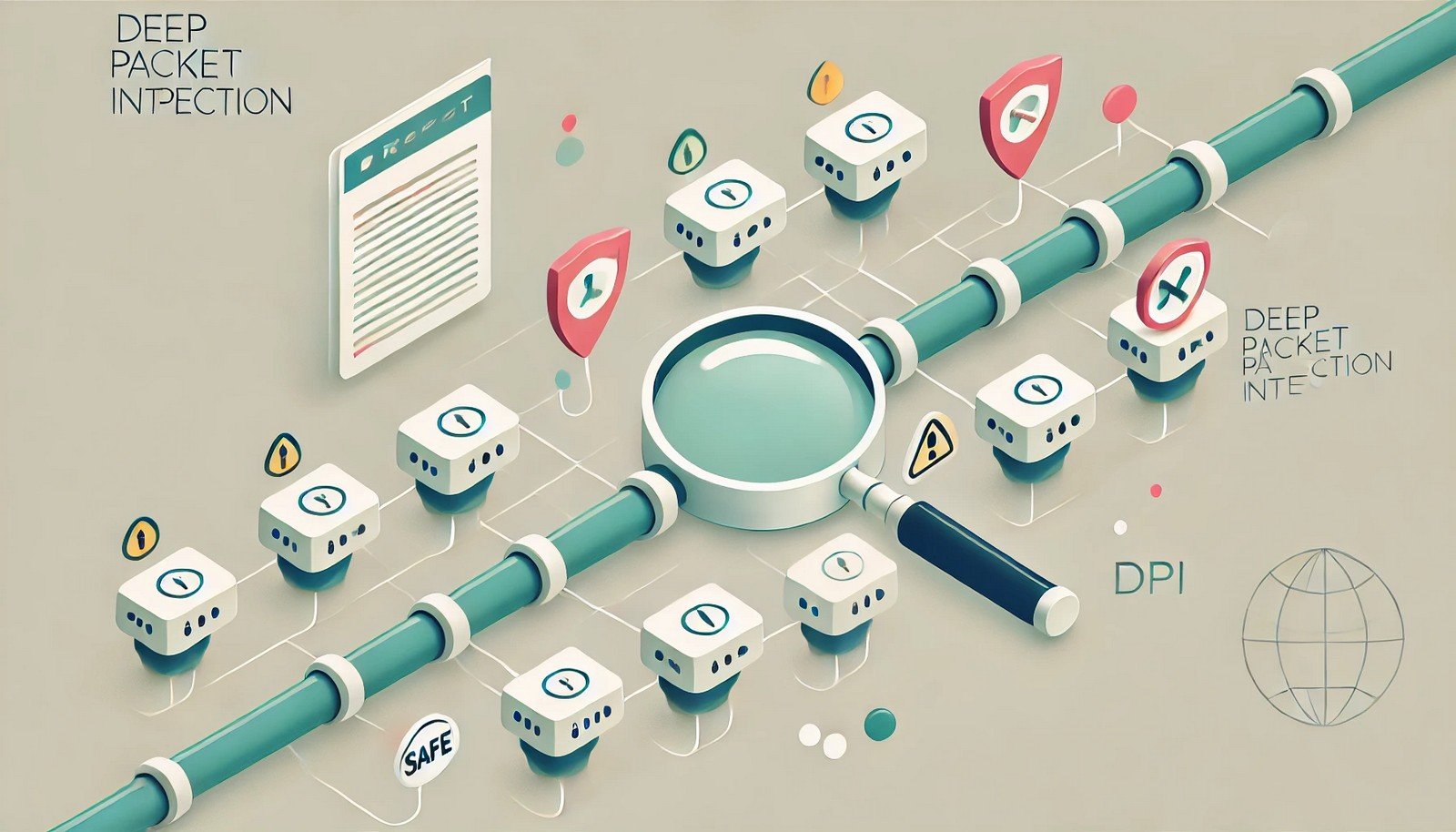Deep Packet Inspection
 (Representational Image | Source: Dall-E)
(Representational Image | Source: Dall-E)
Quick Navigation:
- Deep Packet Inspection Definition
- Deep Packet Inspection Explained Easy
- Deep Packet Inspection Origin
- Deep Packet Inspection Etymology
- Deep Packet Inspection Usage Trends
- Deep Packet Inspection Usage
- Deep Packet Inspection Examples in Context
- Deep Packet Inspection FAQ
- Deep Packet Inspection Related Words
Deep Packet Inspection Definition
Deep Packet Inspection (DPI) is an advanced method of examining and managing network traffic. Unlike basic packet filtering, which only checks packet headers, DPI analyzes the data part (payload) of a packet, allowing for detailed inspection. This technique is used for identifying protocol non-compliance, detecting viruses, and managing bandwidth. DPI can inspect, block, or re-route packets based on content, making it essential for network security, traffic management, and data analytics.
Deep Packet Inspection Explained Easy
Imagine every message you send is inside an envelope. Most people only look at the address on the envelope. But someone using DPI opens it to read what’s inside. This helps them understand exactly what’s going on, catch bad stuff, or make sure you’re following the rules.
Deep Packet Inspection Origin
DPI originated in the early 2000s as an evolution of network traffic monitoring tools. It gained importance with the increasing need for more advanced security measures and traffic control as the internet became more complex and widespread.
Deep Packet Inspection Etymology
The term "deep packet inspection" refers to going deeper than the usual packet analysis to examine the content and structure of data packets.
Deep Packet Inspection Usage Trends
DPI is now widely adopted in sectors such as telecommunications, government, and cybersecurity. Its use has grown with the need for real-time traffic monitoring, lawful interception, and advanced threat protection. However, privacy concerns around its potential misuse have also been raised in recent years.
Deep Packet Inspection Usage
- Formal/Technical Tagging:
Network Security, Traffic Analysis, Intrusion Detection - Typical Collocations:
"DPI firewall"
"deep packet inspection technology"
"real-time DPI monitoring"
"content-based filtering with DPI"
Deep Packet Inspection Examples in Context
- Telecom operators use DPI to prioritize important traffic, such as emergency services, while throttling less critical data.
- Enterprises implement DPI for detecting malicious software embedded in network traffic.
- DPI can be used in educational institutions to block inappropriate content on student networks.
Deep Packet Inspection FAQ
- What is deep packet inspection (DPI)?
DPI is a method for analyzing and managing network traffic by inspecting the content of data packets. - How does DPI differ from basic packet filtering?
Basic filtering only checks packet headers, while DPI inspects the entire packet content. - Is DPI used for security?
Yes, it’s commonly used for intrusion detection, malware filtering, and data loss prevention. - Can DPI slow down network performance?
It can, depending on how it’s implemented and the volume of traffic it analyzes. - Is DPI legal?
Its legality depends on how and where it’s used, especially concerning user privacy and consent. - What industries rely on DPI?
Telecommunications, cybersecurity, government, and education sectors heavily utilize DPI. - Is DPI used in 5G networks?
Yes, DPI plays a crucial role in traffic shaping and security in 5G networks. - Can DPI detect encrypted traffic?
It can identify encrypted traffic types but cannot read encrypted payloads without decryption. - What tools are available for DPI?
Tools like Wireshark and commercial DPI solutions help with packet analysis. - Why is DPI controversial?
It raises privacy concerns since it can inspect user data in real time, potentially violating confidentiality.
Deep Packet Inspection Related Words
- Categories/Topics:
Network Security, Cybersecurity, Data Analytics
Did you know?
DPI technology was famously used to detect and block the spread of malware in the early 2010s, saving companies millions of dollars in potential damage.
PicDictionary.com is an online dictionary in pictures. If you have questions or suggestions, please reach out to us on WhatsApp or Twitter.Authors | Arjun Vishnu | @ArjunAndVishnu

I am Vishnu. I like AI, Linux, Single Board Computers, and Cloud Computing. I create the web & video content, and I also write for popular websites.
My younger brother, Arjun handles image & video editing. Together, we run a YouTube Channel that's focused on reviewing gadgets and explaining technology.



Comments powered by CComment